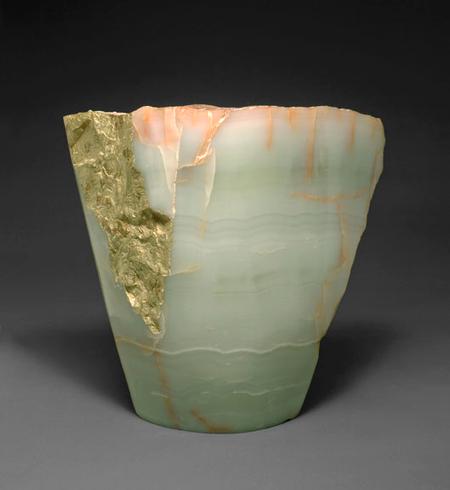
Continuing through June 27, 2015
Distinctions between the geological and the human-made, the provinces of natural history and the fine arts, bend and blur and meet in M.J. Anderson’s rhapsodic suite of sculptures, “Acqua Pietrificata.” That phrase, Italian for “petrified water,” encapsulates the paradoxical qualities of solidity and the limpid play of light inherent in the green onyx from which the sculptures are made. The stone originates in the Middle East and the Indian subcontinent, then is shipped in enormous slabs to Carrara, Italy, where Anderson pores over it, searching for the perfect components to cut, grind, and polish.
In works such as “The Whole Shebang,” faceted planes and smooth surfaces contrast with a rough, scab-like crown. “Lightning Strikes Twice” gleams with gold leaf, its allure heightened by a long channel cut through the back of the piece, evoking corkscrew canyons eroded by eons of wind and water. Abstract works such as these hold more potency than figurative sculptures such as “Embryo of Time,” with its literal depiction of a female belly, pubis, and thighs. The abstract works don’t need the crutch of representation; their strength lies in expertly organic shapes and the simultaneous luxuriance and purity of the materials.
